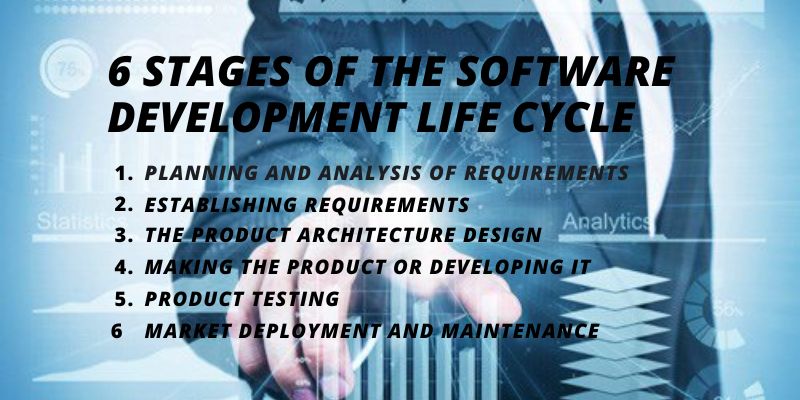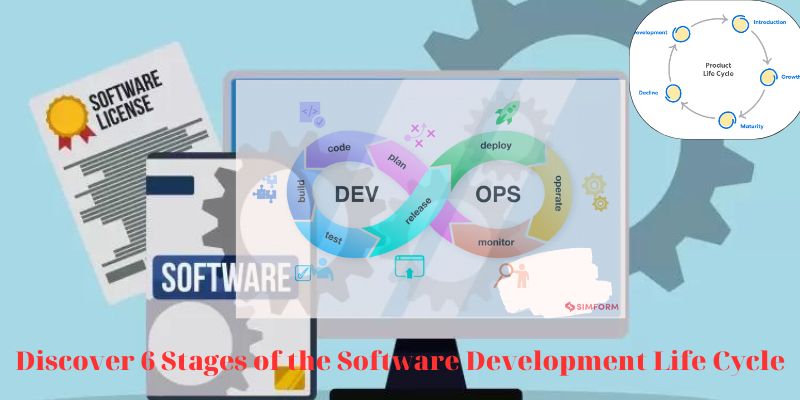The software development life cycle is an ordered interaction at the core of every software development. Someone recognizes a problem, discusses it with a group of like-minded or interested people, comes up with a solution, drafts it, plans for product development, and finds and solves bugs. In this article, lacoon.com will give you everything you need to know about the software development life cycle to manage your IT project effectively
What is the Software Development Life Cycle (SDLC)?
A technique for producing software that is of the highest quality and least expensive in the shortest period of time is the Software Development Life Cycle, or SDLC. An organization may quickly create high-quality software that has been thoroughly tested and is ready for use in production thanks to the SDLC’s well-organized phases. The six stages of the SDLC were covered in the introduction. Common SDLC models include the agile, spiral, and waterfall models.
What is the process of the Software Development Life Cycle?
SDLC works by lowering the cost of software development while both improving quality and accelerating production. SDLC achieves these ostensibly conflicting objectives by following a method that eliminates the common risks of software development projects. Finding weaknesses in the existing systems is the first step in this process.
Thereafter, the specifications for the new system are established. To actually build the program, it then goes through the steps of analysis, planning, design, development, testing, and deployment. SLDC can lessen the need for additional work and post-hoc fixes by anticipating costly errors like forgetting to get input from the client or end-user.
It is essential to realize that the testing phase receives a lot of consideration. Because the SDLC is a cyclical process, you must ensure code quality at every stage. Even though it might save them a lot of time, money, and rework, testing is often neglected by many enterprises. Be shrewd and design the right categories of tests.
6 Stages of the Software Development Life Cycle

Planning and Analysis of Requirements
The requirement analysis stage of the SDLC is the most significant and important. It is carried out by the team’s senior members with assistance from the customer, the sales department, market research, and industry experts. With this information, the fundamental project strategy is then created, and the technical, operational, and financial viability of the product is evaluated.
In the planning phase, project hazards are also identified, and quality assurance requirements are planned for. The technical strategies that can be employed to complete the project effectively and with the fewest risks are defined in the technical feasibility study’s conclusion.
Establishing Requirements
Following completion of the requirement study, the next stage is to precisely describe and record the product needs and obtain customer or market analyst approval. An SRS (Software Requirement Specification) document, which includes all the product requirements to be planned and produced throughout the project life cycle, is used to do this.
The Product Architecture Design
The best design for a new product is created using SRS as a guide for product architects. On the basis of the specifications stated in the SRS, more than one design approach for the product architecture is typically provided and documented in a DDS, or Design Document Specification.
A number of criteria, including as risk analysis, product robustness, design modularity, budgetary concerns, and scheduling constraints, are taken into account when choosing the best design strategy for the product after all major stakeholders have analyzed this DDS.
Each product’s architectural modules are carefully defined by a design strategy, along with how the modules interact and represent data flow with external and third-party modules (if any). The internal designs of each module in the proposed architecture should be properly documented in DDS.
Making the Product or Developing It
The SDLC’s real development and construction of the product takes place at this stage. At this moment, DDS-compliant programming code is created. When designing in a methodical and exact way, code generation can be finished rapidly.
The code is generated using programming tools like compilers, interpreters, debuggers, and other tools of a similar nature, and developers are required to follow the coding guidelines set forth by their company. Coding is done in a number of high-level programming languages, such as C, C++, Pascal, Java, and PHP. The programming language chosen depends on the type of software being created.
Product testing
Although testing activities are typically included in all stages of the SDLC in contemporary SDLC models, this stage is typically a subset of all the stages. Nevertheless, this stage only relates to the product’s testing phase, during which product flaws are discovered, monitored, corrected, and retested until the product satisfies the SRS’s quality requirements.
Market deployment and maintenance
Once the product has undergone testing and is ready for deployment, it is formally released in the pertinent market. Product deployment may occasionally occur in stages depending on the organization’s business plan. Before being made available to a larger market, the product might first undergo testing in a real-world corporate environment (UAT- User acceptance testing).
Depending on the response, the product may subsequently be released either exactly as it is or with suggested enhancements in the target market area. After a product is released onto the market, maintenance is provided to the existing customer base.
Conclusion
The philosophy, methodology, and structure that software development teams use to construct a particular software product, or between organizations, can and do influence how the software development life cycle is modified.
If anything, very little of it should be set in stone. The SDLC is a tool in the project management toolbox that should be tailored to the requirements of a specific project, the team working on it, and other important stakeholders. Phase names, their placement, and whether they are separate or combined into one another change. You should now be well-aware of the life cycle that every software development project goes through as well as its function in project management and as a tool for enhancing results.




